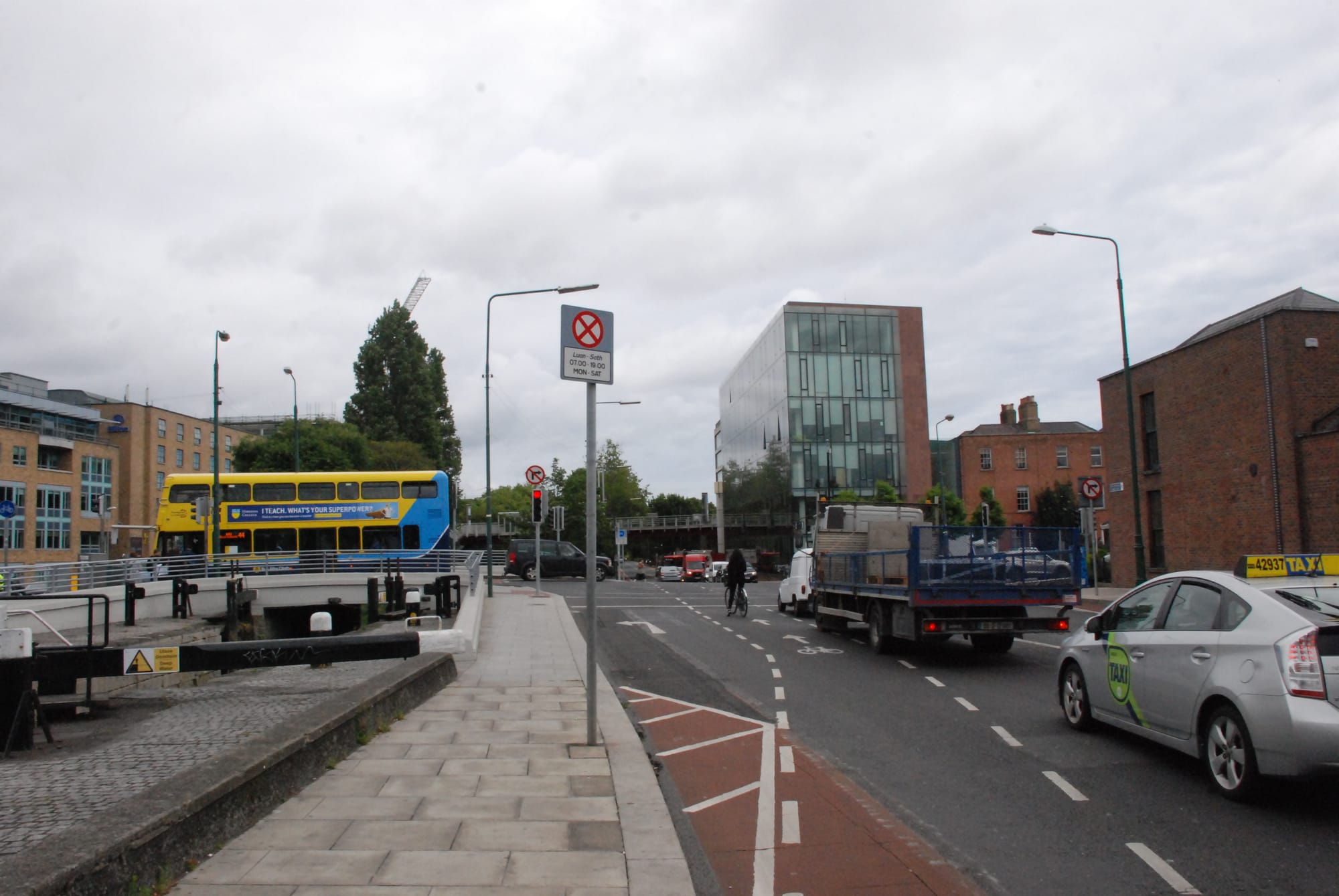What’s the best way to tell area residents about plans for a new asylum shelter nearby?
The government should tell communities directly about plans for new asylum shelters, some activists and politicians say.
“You’re dealing with huge trucks on very small roads that aren’t necessarily designed for them,” says Green Party city councillor Patrick Costello.

There’s a gap in the pavement at the corner of Charlemont Bridge near the Grand Canal at the edge of Ranelagh. The slabs of pavement have been patched up with tarmac.
A sharp left turn onto the bridge from Canal Road appears to be the problem. The corner has been damaged by heavy goods vehicles (HGVs) turning left towards the city centre.
It’s also not far from where, in March this year, a collision between a truck and a cyclist left a woman in her 30s with serious injuries.
Some local Dublin city councillors say it’s time for the council to step up and make the intersection safer.
It’s just after midday on a recent Thursday.
A blue four-wheeled truck approaches slowly from Canal Road and turns left onto Charlemont Bridge. It moves as far away from the path as is possible at the tight junction. But it’s not enough.

As the truck turns left onto the bridge, the back wheel climbs up and onto the path. It struggles over the concrete slab set within the patchwork repair job. The slab shudders, long after the truck has driven off.
Most HGVs that approach seem to go straight through the junction. Only small trucks are allowed to turn onto the bridge at this time of the day. There is a ban on trucks with five or more axles from Monday to Sunday, 7 am to 7 pm.
The junction is busy, with four competing lanes of traffic, including cyclists.
From Canal Road, the cycle lane veers into the centre of traffic in order to connect with the cycle track after the junction. As cyclists approach the left turn, they’re forced to either navigate the predetermined track or continue along an unmarked lane turning left onto the bridge.
Green Party councillor Patrick Costello says it’s time that something is done to solve what he says is a dangerous intersection and to tackle the issue of HGVs in the area.
“I live around the corner and I’ve seen a lot of increased building activity in the Charlemont Street area,” he says. “You’re dealing with huge trucks on very small roads that aren’t necessarily designed for them.”
Despite the ban on five-axle trucks during the day, Costello says some still make the left turn onto the bridge.
It does seem as if there are a fair number of HGVs in the area.
Between 12:55 pm and 13:40 pm on Monday, 14 HGVs passed Charlemont Bridge by one route or another.
“Because there’s a concentration of building here, there’s a concentration of trucks,” says Costello. “So a lot of mornings you get trucks parked there on the cycle track along the canal.”
Dublin City Council does not appear to have taken any serious measures, yet, to alleviate the danger posed to cyclists and the damage caused to the bridge as a result of HGVs.
Costello says that council officials told him after the March accident that they would make some recommendations to the Road Safety Authority (RSA) about the spot.
Annette Regan of the RSA said that any queries should be sent to Dublin City Council.
Dublin City Council’s press office has yet to respond to a number of queries emailed in the past two weeks about improvements and maintenance around Charlemont Bridge.
The council does have powers to give permits sometimes to HGVs with more than five axles, to let them into the parts of Dublin city where they are not usually allowed between 7am and 7pm.
“We do have the power to issue permits to vehicles in two circumstances,” said Assistant Chief Executive Brendan Kenny in a presentation to the council’s transport committee.
Circumstance one: when HGVs need to unload in an area.
Circumstance two: HGVs may be granted permits for “transit access” if they are not allowed to use the Port Tunnel to get to where they are going. (In these cases, they have to follow a certain route.)
But Councillor Costello and independent councillor Mannix Flynn say the council needs to do something differently.
“It’s a permit issue,” says Flynn. “These infrastructures, like the bridges across the Liffey, are checked on a regular basis. But these are tight, inner-city areas. Dublin City Council manage the transport within the city area and they’ve completely failed in this regard.”
“In terms of the wider safety issue, Dublin City Council are pushing this onto the RSA,” Costello says. “Traffic in Dublin needs to be streamlined. It dovetails with the whole issue of local government reform and why we need a strong, elected mayor with powers over transport.”
Get our latest headlines in one of them, and recommendations for things to do in Dublin in the other.